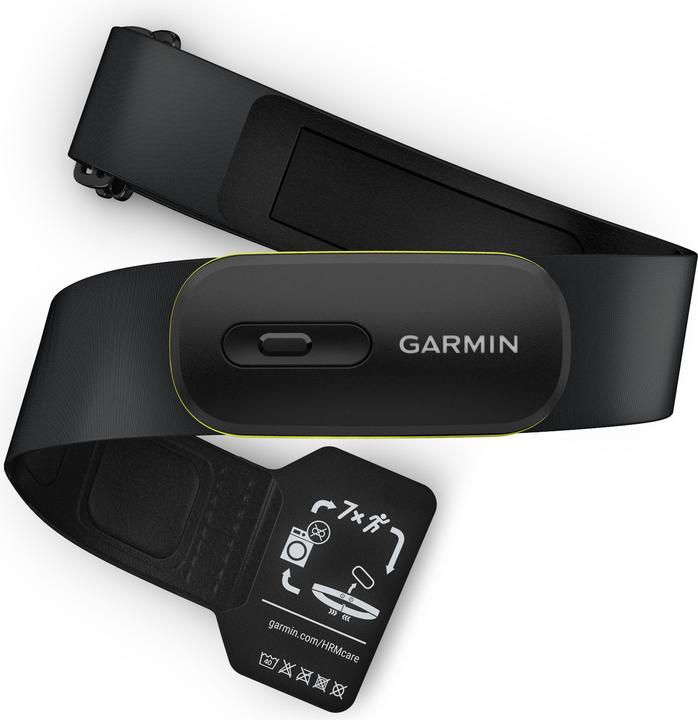
Too Many Heart Rate Belts? Here's How to Find the Right One
Discover the key factors to consider when selecting the perfect heart rate belt for your fitness needs.
Last updated 6 hours ago. Automatically generated content.


Select options and limit the number of products
Connectivity refers to how heart rate belts communicate with other devices, such as smartphones or fitness equipment. It is crucial as it determines compatibility, ease of use, and the ability to sync and analyze fitness data effectively.
Popular options (you can select more than one)
Bluetooth
Standard wireless technology that allows connection to a wide range of devices.
Ideal for general use, offering reliable performance and compatibility with most modern smartphones and fitness apps.
Bestseller
ANT+
Wireless protocol used primarily for fitness and health devices, enabling data transfer between sensors.
Great for serious athletes, allowing connection to multiple devices simultaneously, such as bike computers and smartwatches.
Bestseller
Bluetooth Low Energy
Energy-efficient version of Bluetooth that extends battery life while maintaining connectivity.
Perfect for long-duration activities, ensuring continuous data transfer without excessive power consumption.
Bestseller
Pulse belt type refers to the design and configuration of the heart rate belt, influencing its functionality and compatibility with devices. Choosing the right type is crucial for ensuring accurate heart rate monitoring and a comfortable fit during physical activities.
Popular options (you can select more than one)
Heart rate belt (with module)
Typical price
45.– to 89.–Includes a sensor module for real-time heart rate monitoring and data transmission.
Ideal for those who require instant feedback and integration with fitness apps or devices.
Bestseller
Spare belt (without module)
Typical price
22.– to 38.–Designed as a replacement or additional strap without the sensor module.
Useful for individuals who already have a compatible module and want a backup or alternative strap.
Bestseller
The carrying method of a heart rate belt determines how the device is worn and impacts comfort and accuracy during use. Choosing the right carrying method can enhance the experience by providing consistent heart rate monitoring without discomfort or interference during activities.
Popular options (you can select more than one)
Around the chest
Provides accurate heart rate readings by positioning sensors close to the heart.
Ideal for intense workouts and activities, ensuring consistent and reliable data without slipping.
Bestseller
Around the arm
Offers more convenience and ease of wear compared to chest belts.
Suitable for casual fitness activities, allowing freedom of movement and comfort while monitoring heart rate.
Bestseller
Country of origin refers to the nation where the heart rate belt is manufactured, impacting perceptions of quality, craftsmanship, and reliability. Understanding the country of origin helps in assessing the product's design philosophy and potential technological innovations, which can influence satisfaction and performance.
Popular options (you can select more than one)
Germany
Typical price
22.– to 76.–Renowned for precision engineering and high-quality manufacturing standards.
German-made heart rate belts are trusted for durability and advanced technology, ideal for professional athletes.
Bestseller
France
Typical price
43.– to 76.–Known for elegant design and innovative features.
French heart rate belts offer a blend of style and functionality, perfect for fashion-conscious fitness enthusiasts.
Bestseller
China
Typical price
35.– to 72.–Offers cost-effective manufacturing and large-scale production capabilities.
Chinese heart rate belts provide affordable options, making them accessible for budget-conscious buyers.
Bestseller
Taiwan
Typical price
89.– to 130.–Recognized for technological expertise and competitive pricing.
Taiwanese heart rate belts deliver reliable performance with excellent value, appealing to tech-savvy users.
Bestseller
The brand factor in heart rate belts plays a crucial role in ensuring accuracy, comfort, and integration with other fitness technologies. Leading brands like Polar and Garmin are recognized for their precision and compatibility, while Suunto is appreciated for robust designs suited for outdoor enthusiasts.
Popular brands (you can select more than one)
Polar
Renowned for its industry-leading accuracy in heart rate monitoring technology.
Offers seamless integration with various fitness apps, enhancing user experience and tracking capabilities.
Bestseller
Garmin
Famous for its reliable GPS and heart rate technology, ideal for multi-sport tracking.
Provides extensive data analysis and compatibility with Garmin Connect, perfect for serious athletes.
Bestseller
Suunto
Known for durable designs, suited for challenging outdoor environments.
Offers advanced features like altitude and weather tracking, catering to adventurous users.
Bestseller
Coros
Focuses on providing long battery life and efficient performance in compact designs.
Ideal for users seeking reliable tracking during extended activities without frequent recharging.
Bestseller
Sigma Sport
Specializes in affordable heart rate belts with essential functionalities.
Suitable for budget-conscious consumers looking for reliable basic performance and data tracking.
Bestseller




